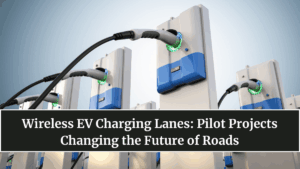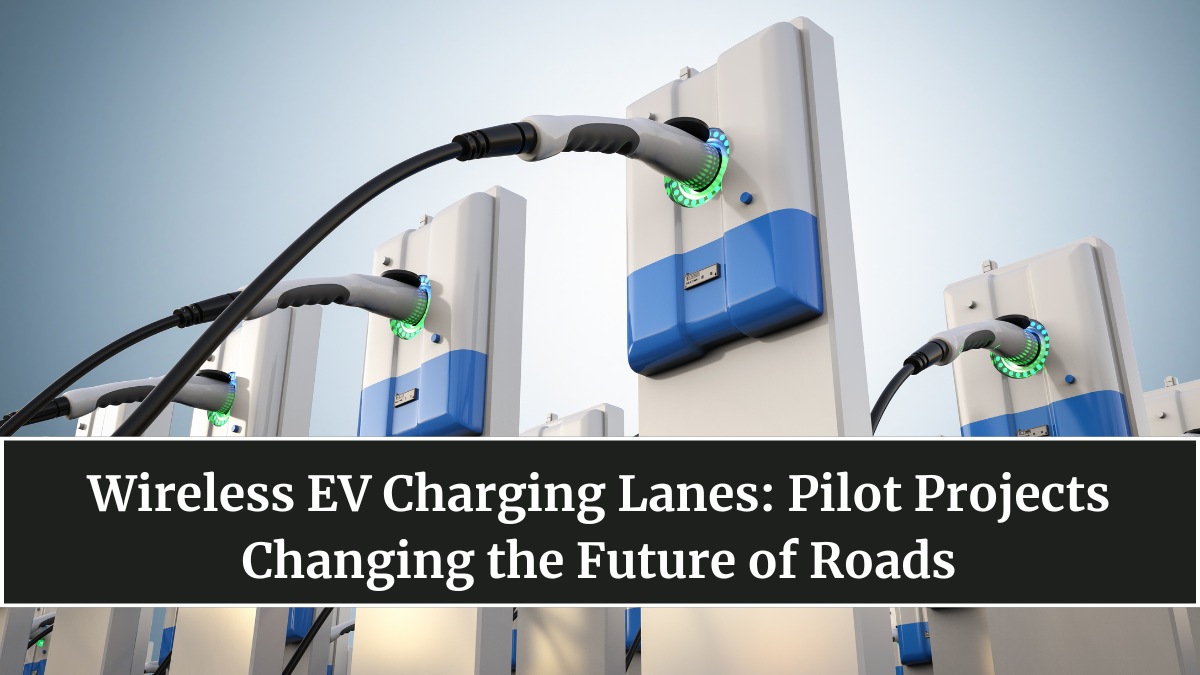Imagine driving your electric car without ever stopping to plug in — the battery recharges while you’re moving. In 2025, this vision is quickly turning into reality as wireless EV charging lanes begin to roll out across major cities worldwide. These futuristic roads use electromagnetic coils beneath the surface to charge electric vehicles in motion, reshaping the future of travel and energy efficiency.
As the EV market grows rapidly, charging speed and convenience have become critical challenges. Wireless dynamic charging addresses both — reducing range anxiety, minimizing downtime, and creating a seamless driving experience.

How Wireless EV Charging Works
The technology behind wireless EV charging is based on inductive power transfer — the same principle that powers wireless smartphone chargers but on a much larger scale.
Key components include:
-
Embedded Charging Coils: Installed beneath road surfaces, these coils transmit energy via electromagnetic fields.
-
Vehicle Receivers: Fitted on the underside of EVs to receive the transferred power.
-
Smart Grid Integration: Ensures stable energy flow, adjusting current according to vehicle speed and position.
When an EV drives over a wireless lane, the coils activate and transfer power magnetically to the receiver pad. The system intelligently detects which vehicle is passing, how much charge it needs, and adjusts energy output accordingly — all within milliseconds.
Global Pilot Projects Leading the Way
Around the world, pilot projects are proving that wireless charging is more than just an experiment.
-
Sweden’s eRoadArlanda Project introduced the first functional electric road capable of powering both passenger cars and heavy trucks.
-
Israel’s ElectReon has deployed wireless charging roads in Tel Aviv and is now expanding to Italy, Germany, and the U.S.
-
Michigan, USA, is running America’s first inductive road pilot in Detroit, creating a 1-mile stretch where vehicles can charge while moving.
-
South Korea and Japan have integrated dynamic charging in select smart city districts, showing real-world scalability for mass use.
Each of these pilots demonstrates one thing clearly — EV charging will soon happen invisibly, without human effort or time waste.
Benefits of Dynamic Charging Infrastructure
The shift toward wireless charging lanes brings multiple benefits for drivers, cities, and the planet.
For Drivers:
-
Continuous charging eliminates range anxiety.
-
Smaller onboard batteries mean lighter, cheaper vehicles.
-
Hands-free experience with zero cable dependency.
For Cities and Governments:
-
Reduced need for charging stations.
-
Smarter traffic and energy management through grid integration.
-
Encourages faster adoption of electric mobility.
For the Environment:
-
Less battery waste due to longer battery life.
-
Lower grid strain by distributing power more evenly throughout the day.
-
Supports renewable energy utilization through synchronized smart grids.
This innovation is not just about charging — it’s about creating intelligent transport ecosystems that link vehicles, energy networks, and city infrastructure into a single sustainable loop.
Challenges and Limitations
Despite its promise, wireless EV charging still faces hurdles before widespread implementation:
-
High Infrastructure Cost: Installation and maintenance require significant investment.
-
Efficiency Drop: Energy loss during transmission can reach 10–15% compared to wired charging.
-
Standardization: Different automakers use varying receiver designs, complicating compatibility.
-
Durability Concerns: Road maintenance and weather impact long-term reliability of embedded systems.
To overcome these challenges, collaborations between automakers, governments, and tech firms are intensifying. In fact, many manufacturers are standardizing receiver modules for global interoperability.
The Economic and Social Impact
By reducing charging downtime and infrastructure congestion, wireless EV roads could revolutionize how nations plan transport and energy. Analysts estimate that by 2030, cities adopting this technology could save billions in fuel and maintenance costs, while reducing CO₂ emissions by up to 25%.
Moreover, it could open the door for EV-heavy logistics fleets, enabling trucks and delivery vans to operate 24/7 with minimal charging breaks. This could reshape e-commerce, freight transport, and urban planning as we know it.
The Road Ahead for Wireless EV Charging
The next phase of wireless EV charging involves integrating AI and IoT for predictive energy management. Roads will soon detect approaching vehicles, pre-activate coils, and adjust power delivery dynamically.
Emerging innovations include:
-
Dynamic Toll Systems: Charging fees based on the amount of energy consumed per trip.
-
Vehicle-to-Grid (V2G) Connectivity: Cars returning excess power to the grid during low-traffic hours.
-
Solar-Powered Smart Roads: Combining renewable energy generation with wireless charging.
In the near future, highways will not just carry cars — they will power them, manage them, and communicate with them.
FAQs
What is wireless EV charging?
It’s a system that uses electromagnetic induction to charge electric vehicles without cables, either while parked or in motion.
How efficient is it compared to plug-in charging?
While slightly less efficient (around 85–90%), it offers unmatched convenience and constant energy supply during travel.
Which countries are leading in wireless EV charging projects?
Sweden, Israel, the USA, and South Korea are currently leading pilot initiatives.
Can all EVs use wireless charging roads?
Only vehicles equipped with compatible receiver pads can benefit, but automakers are working on universal standards.
When will wireless charging lanes become common?
By the early 2030s, major cities are expected to deploy this technology on key highways and public transport corridors.
Click here to know more.
